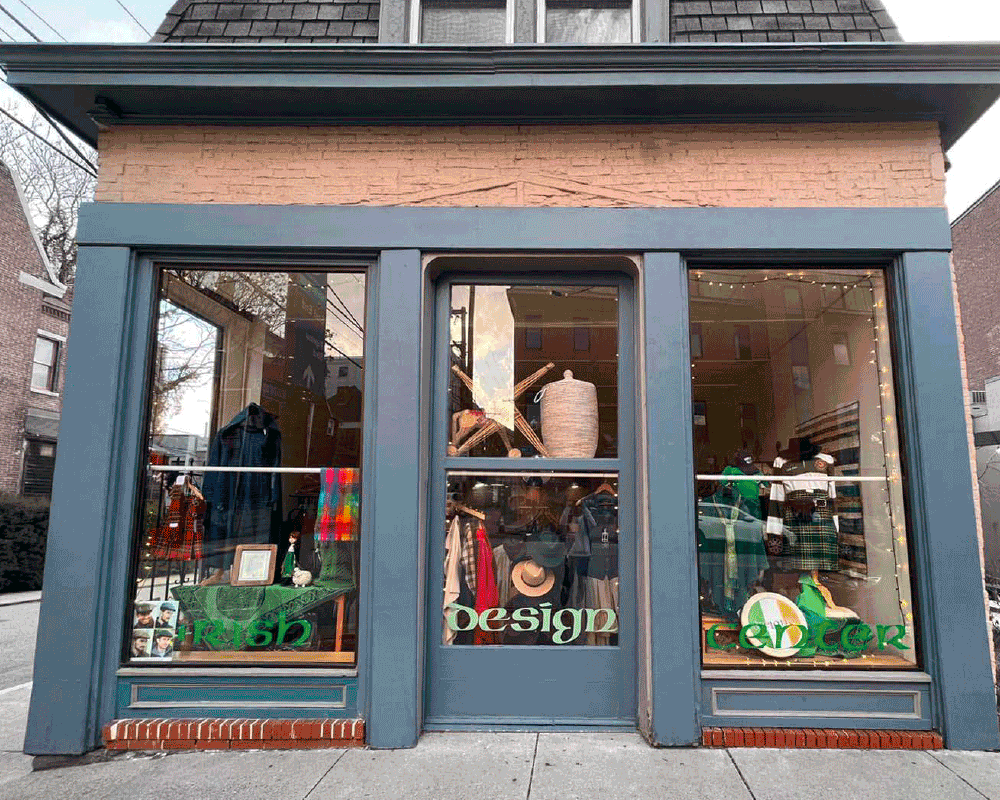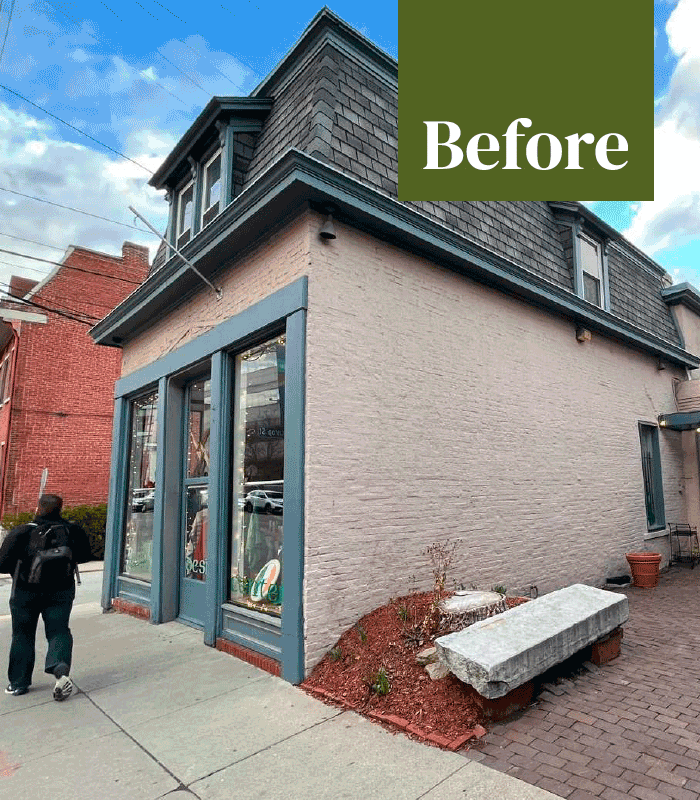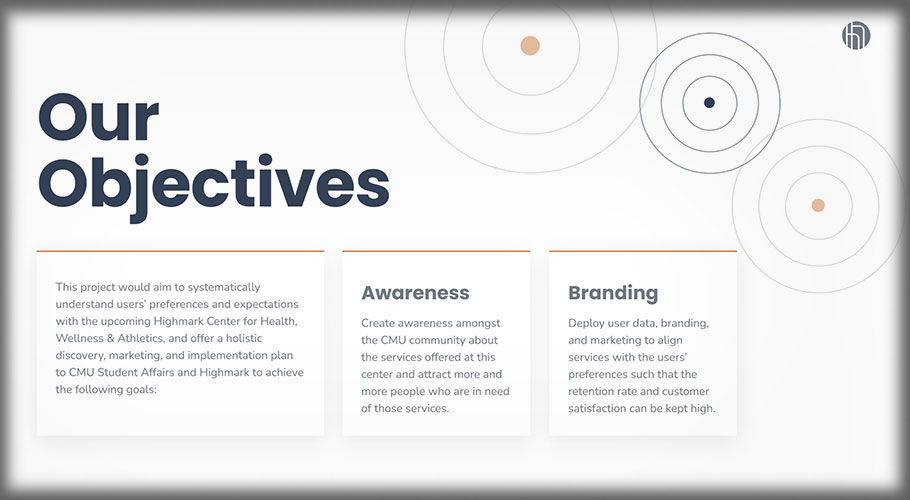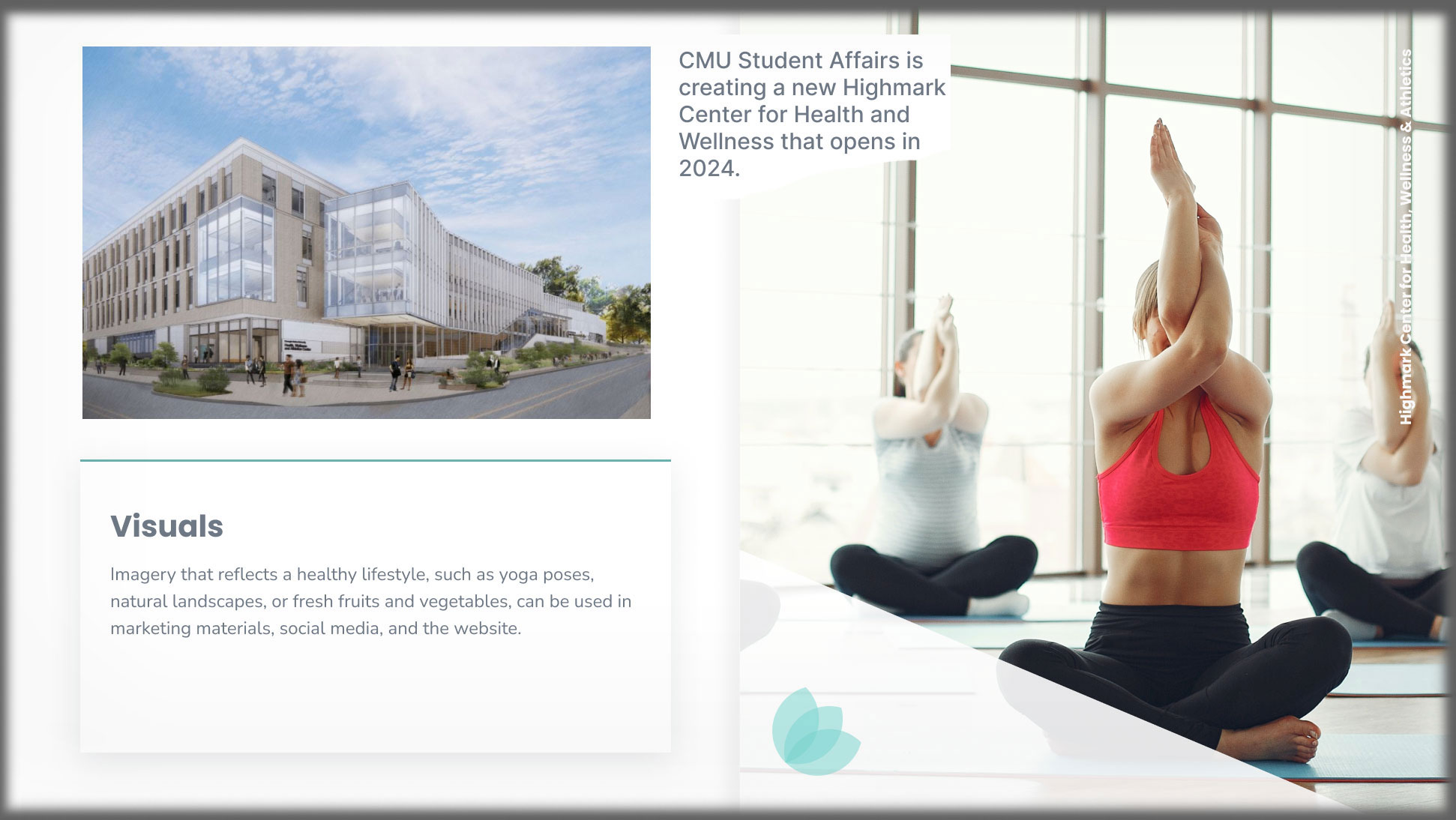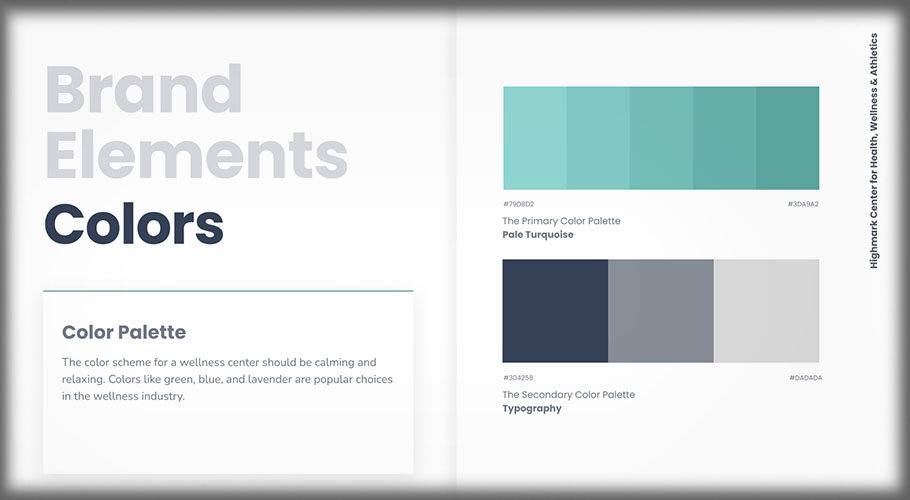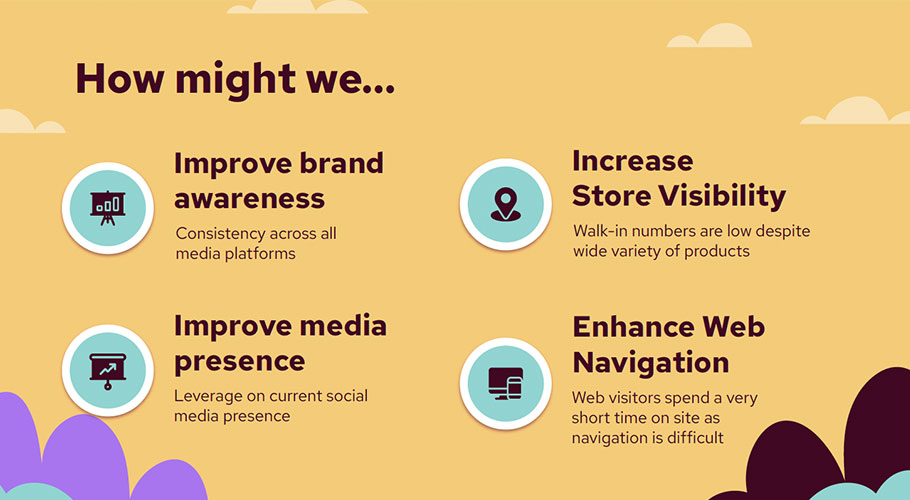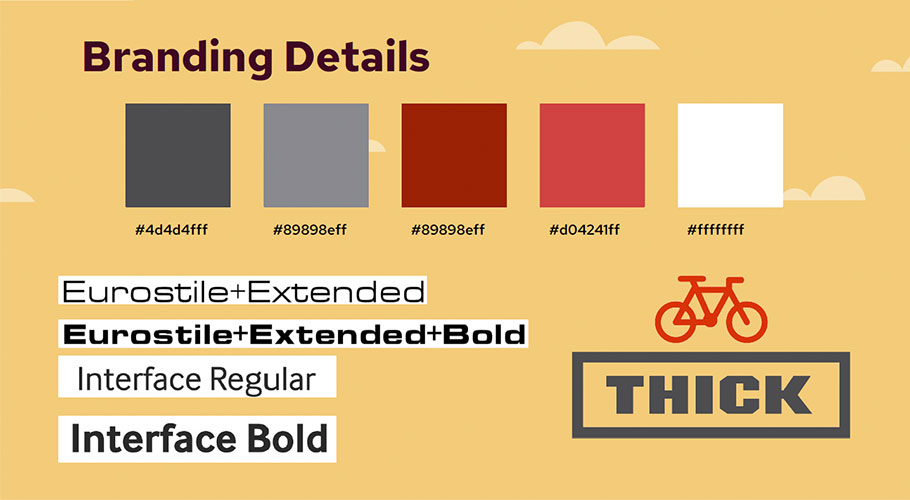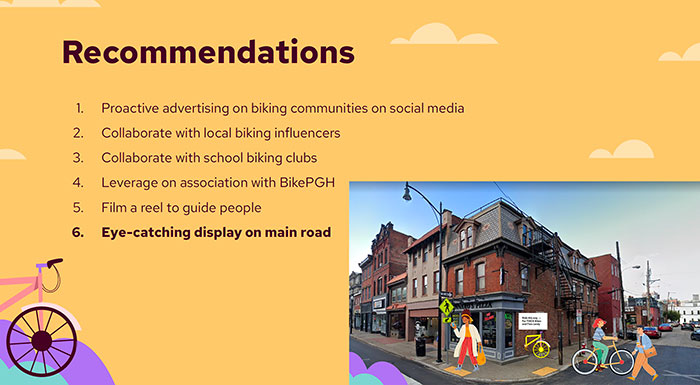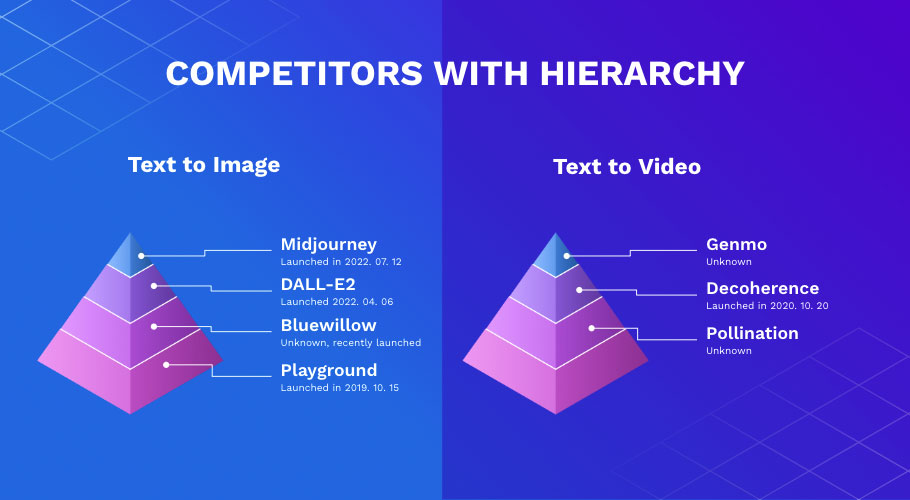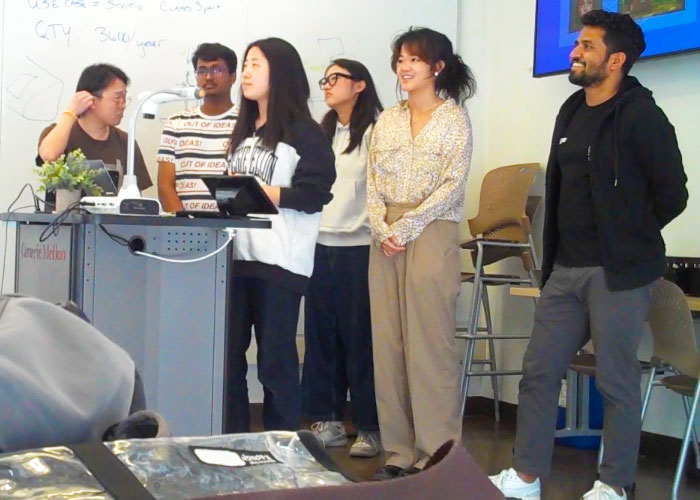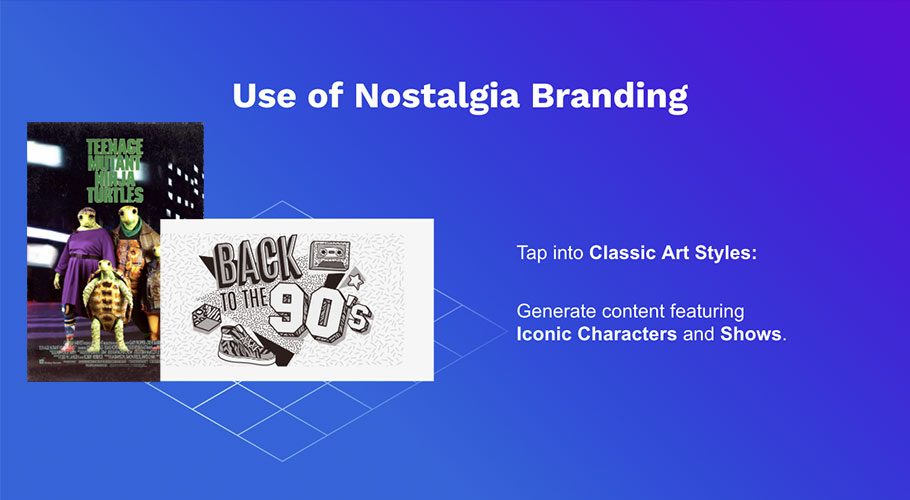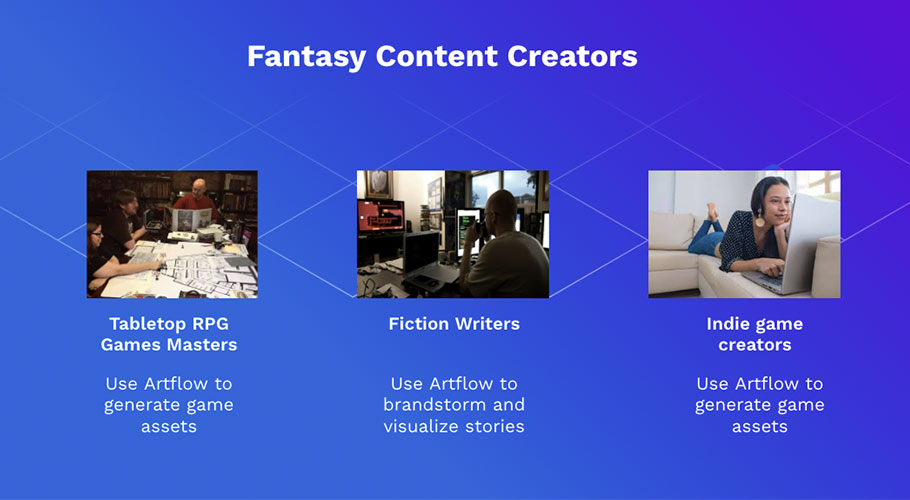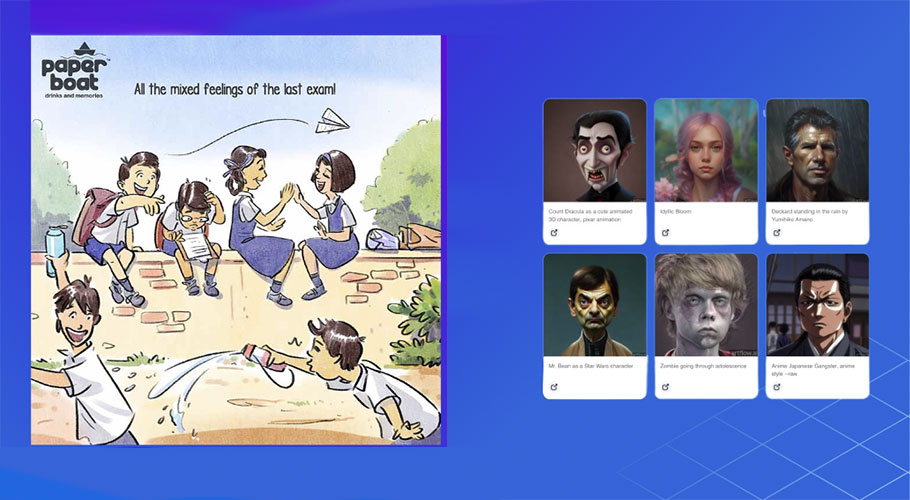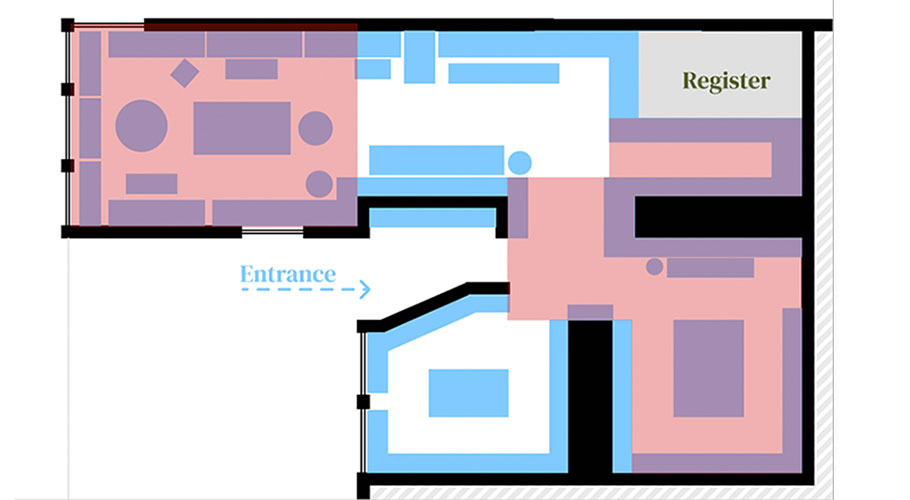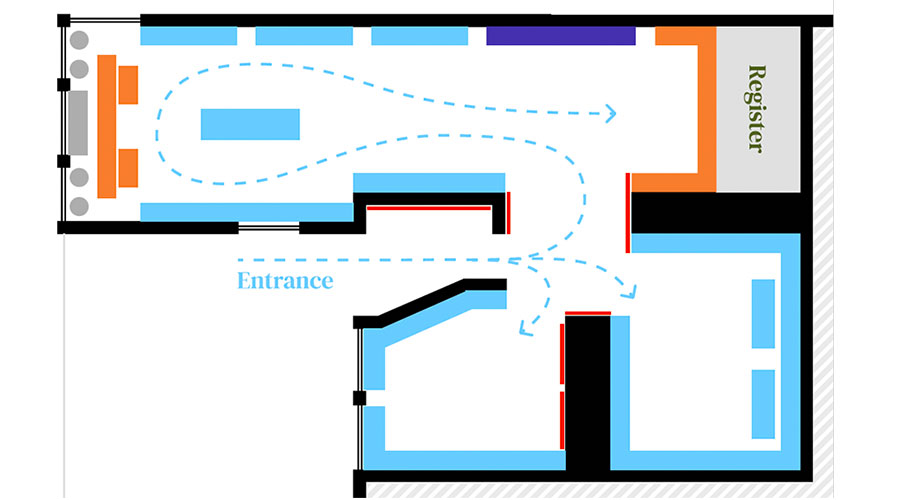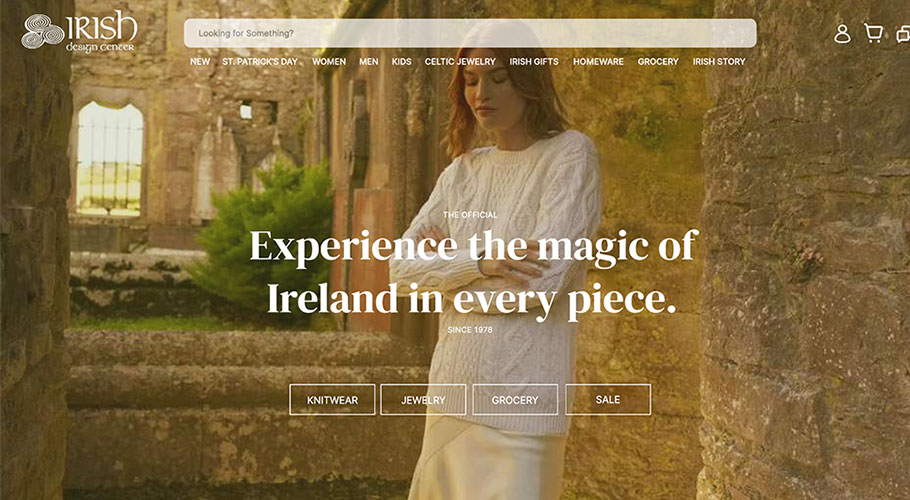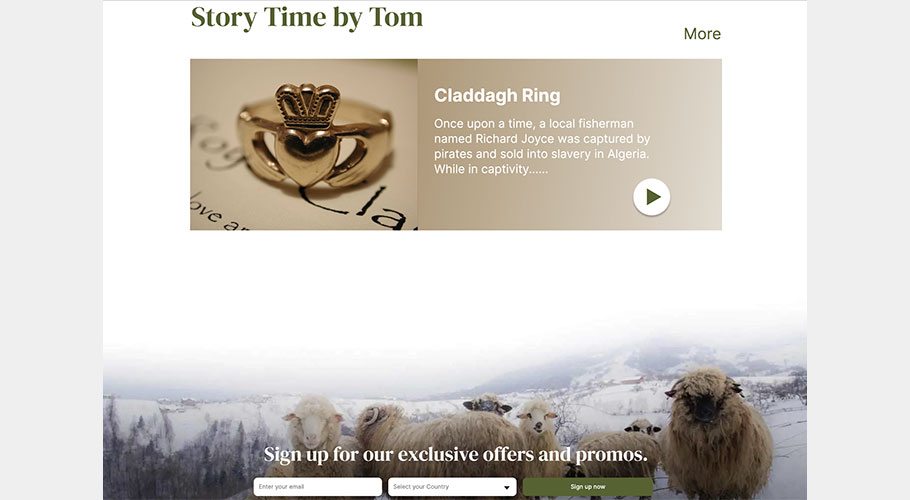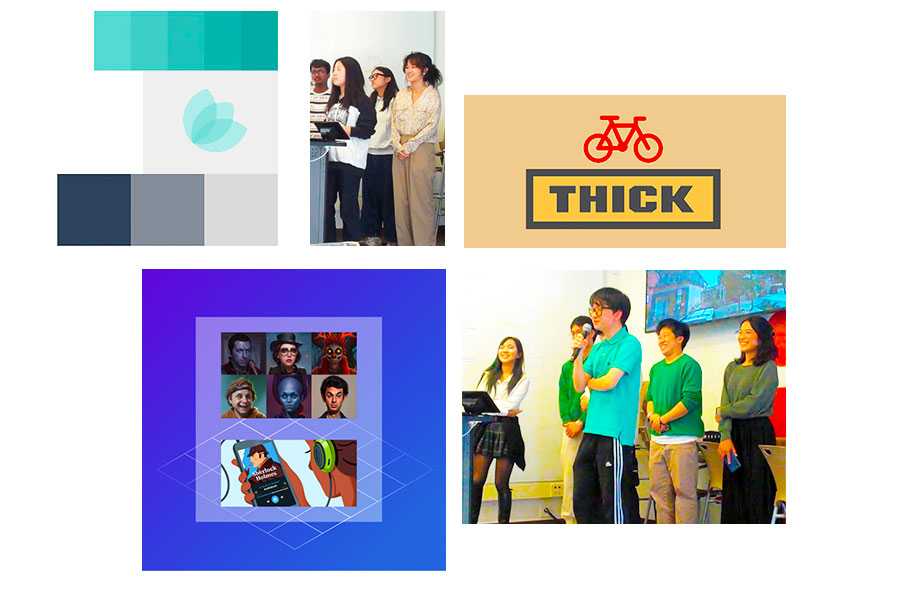
Managing Products & Brands— Final Presentations
By Phil Geist
The Managing Products & Brands course is an introduction to the product life cycle and brand management strategies. Through interactive lectures, case discussions, and assignments, students learn about planning, development, and marketing tools to address common challenges across various industries. This course emphasizes the importance of cross-functional leadership for product and brand managers across aspects of marketing, engineering, accounting, and manufacturing.
What are the course objectives for the Managing Products & Brands course?
Managing Products and Brands is a required course for students in the Master of Integrated Innovation for Products & Services program. Various topics are covered that help students improve their product and brand management skills. In this course students learn by doing and complete three agency shootouts and one client project. These deliverable assignments provide students with the opportunity to apply the concepts they learn in class as well as to improve their persuasiveness skills.
Explore student projects below from Spring 2023:
Highmark Center for Health & Wellness

Highmark Center for Health & Wellness Team Members:Aman Sinha, Ashish Mangal, Danyal Ghanbari Barfeh, Frank Zhao, Myria Mathew, Sachi Bafna
Highmark Center for Health and Wellness Website
Aman, Ashish, Danyal, Frank, Myria, and Sachi created a client pitch for the new Highmark Center for Health, Wellness, & Athletics on CMU's campus focusing on communitiy awareness, branding, and visual components.
Highmark Center for Health & Wellness Project Team:
The biggest challenge for this project was the limited timeframe of only six weeks to conduct primary research, analyze requirements, formulate recommendations, and design solutions. With such a short time span, it was challenging to gather comprehensive user preferences and expectations, particularly considering the diverse needs and expectations of the CMU community. Additionally, the lack of direct access to the team working on the Highmark Center presented a challenge in terms of validating ideas, aligning strategies, and ensuring the feasibility of proposed solutions.
Highmark Center for Health & Wellness Project Team: Working on this project provided valuable lessons and insights. Firstly, it highlighted the importance of conducting thorough primary research and gathering user data to inform decision-making. Understanding the core needs and preferences of the CMU community was crucial for developing a comprehensive and effective marketing and implementation plan. Secondly, it emphasized the significance of clear and consistent branding to create awareness and build a strong connection with the target audience. Lastly, the project demonstrated the need for cross-campus collaboration and communication to ensure the success of initiatives that span multiple departments or organizations.
iii: Have you had a chance to talk to the team working on the Highmark Center to pitch your ideas?
Highmark Center for Health & Wellness Project Team: Unfortunately, due to the limited access to the team working on the Highmark Center, the opportunity to pitch the ideas and recommendations directly to them did not materialize. While we were able to present our concepts to Professor Corder and the class, the lack of communication with the Highmark project team during the later stages of the project made it challenging to validate ideas and explore potential implementation avenues. However, if given the opportunity, we would love to present our ideas to the team involved in the Highmark Center project, as we believe our insights and recommendations could contribute positively to the center's goals of enhancing the health and well-being of the CMU community.
THICK Bikes

THICK Bikes Team Members:Brielyn Chua, Claudia Chen, Mizuki Kadowaki, Mukta Tak
THICK BIKES website
Brielyn, Claudia, Mizuki, and Mukta created a client pitch for THICK Bikes centered on improving brand awareness and media presence, increasing store visibility, and enhancing web navigation.
Our team approached the division of work in this project by leveraging our individual backgrounds and interests. With a diverse range of expertise and career aspirations within the team, it was a straightforward process to allocate responsibilities. Initially, two team members focused on conducting UX Research, while the other two focused on Market Research. Once gathering the initial findings, we aligned our objectives and identified the four most significant challenges to address.
Through constructive discussions, we reached a consensus on the best approaches to take and divided the execution of these ideas among ourselves, assigning tasks based on our strengths and preferences. This approach allowed us to maximize efficiency and tap into each team member's unique skills to drive the project forward.
iii: What are your biggest takeaways from this project? What skills might you use moving forward in other courses or in the workforce?
THICK Bikes Team: This project provided me with a valuable real-world experience that differed from the typical case studies focused on rapid expansion and profit maximization. It was refreshing to work on designing the branding for a local specialty bike shop that had different priorities, such as fostering a strong local presence rather than seeking rapid growth. The experience gained from this project has honed my ability to adapt and think creatively in varied contexts, enabling me to tackle a wide range of real-world challenges effectively.
iii: Your client had some specific constraints in place for your prompt; how did you work with those to accomplish your goal?
THICK Bikes Team: We recognized the significance of comprehending the underlying values associated with the client's specific constraints. Understanding the business's principles and the reasoning behind these constraints greatly influenced our branding decisions, going beyond the imposed limitations.
In the case of THICK bikes, preserving the Pittsburgh local identity and maintaining their existing operations without significant alterations were essential priorities for the client. Therefore, we focused on making minute adjustments to current operations that would have a meaningful impact on the user experience, while minimizing any additional burden on the staff.
By carefully navigating these constraints, we were able to introduce improvements that aligned with the client’s objectives and create an impact on the user end. This required a thorough understanding of their business model and a strategic approach to identifying areas for enhancement within the given framework.
Art Flow
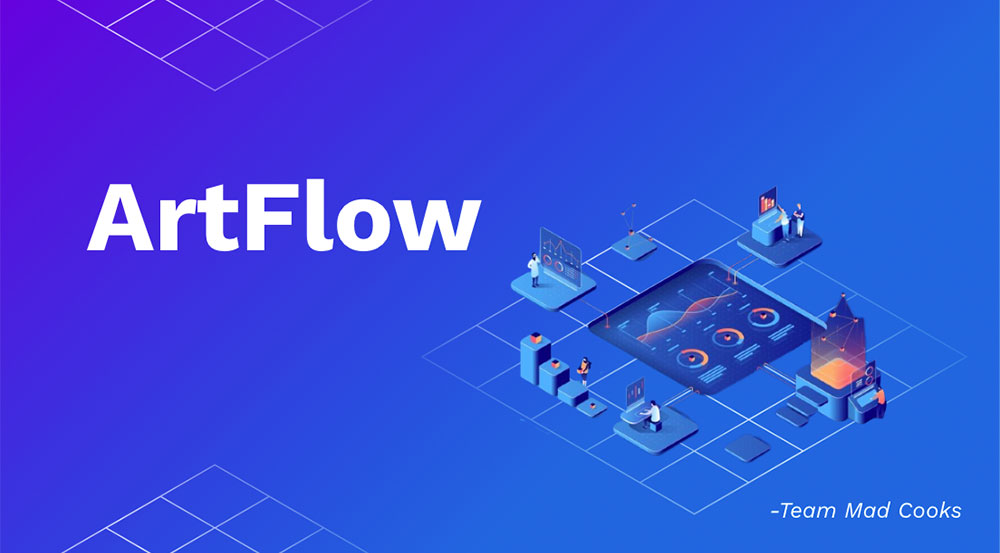
Art Flow "Team Mad Cooks" Team Members:Wendi Yin, Link Wei, Lan Lyu, Harsh Raj, Vishal Urlam, Yixuan Wang
Wendi, Link, Lan, Harsh, and Vishal created a client pitch for Art Flow focused on a promotion strategy to raise awareness about the brand's unique high-constrast and hand painted AI art style.
Artflow Website
iii: What was the biggest challenge for this project?
Team Mad Cooks: The biggest challenge was identifying a unique niche for Artflow in a market saturated with competing AI products. When we were doing competitive analysis, we found a lot of AI companies are working on the text-to-image and text-to-video fields, and some companies like Midjourney and DALL-E are already pretty successful. So it really took us some time to figure out what makes Artflow different.
After interviewing Artflow users and trying all the competitive products from a user perspective, we found out that Artflow has a more high-contrast and hand-painted/cartoon style, which provides a rich and varied timbre that enhances the vibrancy of the generated videos. This distinct style has the potential to resonate strongly with digital content creation and cater to the specific aesthetic preferences of game players, fiction writers, indie game creators, and educators.
iii: What did you learn from working on this project?
Team Mad Cooks: By engaging in competitive analysis and examining the AI product landscape, we have acquired valuable knowledge regarding prevailing market trends. This process has allowed us to identify the challenges and opportunities within the industry.
Moreover, we have applied our classroom learnings to devise tangible marketing and promotion strategies for a genuine product in the field. Our discussions with the CEO of Artflow have been particularly enlightening, providing us with insightful communication.
Collectively, these experiences enabled us to develop focused marketing strategies and customize product features to effectively cater to the unique needs of specific user segments.
iii: Could you tell us a little bit more about the nostalgia aspect of Artflow?
Team Mad Cooks: Based on our observations, we have noticed a growing trend among Gen Z individuals who are seeking nostalgic experiences. This can be observed through the increasing popularity of film cameras, DVs (digital video), and polaroid cameras. These preferences indicate a desire for a vintage or retro aesthetic.
Given Artflow's stylish and distinct approach, we recommend capitalizing on this trend by creating a nostalgic style and experience for our target customers. By incorporating elements that evoke nostalgia, such as vintage filters, retro color palettes, or design inspirations from classic art styles, we can tap into this sentiment and generate buzz around Artflow. This approach can help attract more customers who are specifically looking for a nostalgic and retro-inspired artistic experience.
By aligning Artflow with the nostalgic trend, we can create a unique selling point that sets us apart from competitors and appeals to the target demographic seeking a nostalgic aesthetic. This can be implemented through marketing campaigns, user interface design choices, and even collaboration with influencers or brands that embody a nostalgic vibe.
iii: Could you tell us more about the potential opportunities to promote ArtFlow? For example your team mentioned word-of-mouth advertising and potential influencer partnership marketing / opportunities to expand into immersive storytelling for children?
Team Mad Cooks:
Word-of-Mouth Advertising: This is the main way Artflow currently grows its users. We proposed to encourage satisfied users of ArtFlow to spread more positive word-of-mouth about their experiences with the platform through referral programs, incentives for sharing ArtFlow-generated artwork on social media, or featuring user testimonials on the ArtFlow website.
Influencer Partnership Marketing: We recommend Artflow collaborate with influential individuals in the art and digital content creation space, such as game players, writers, educators, or content creators. Partnering with these influencers can involve sponsored content, tutorials, or live streams showcasing the use of ArtFlow for their creative processes. Their endorsement can help increase ArtFlow's visibility and attract new users.
Expand into Immersive Storytelling for Children: Identify opportunities to extend ArtFlow's capabilities into the realm of immersive storytelling, particularly targeting children. This can involve partnering with children's book authors, educational content creators, or even game developers to incorporate ArtFlow as a tool for creating visually engaging and interactive stories. This expansion can open up new markets and opportunities for ArtFlow.
Social Media Engagement: Actively engage with the ArtFlow community on social media platforms. Share user-generated content, provide tips and tricks, run contests, and respond to comments and inquiries. Building an active and engaged community can create a positive reputation for ArtFlow and encourage organic growth through social sharing.
Collaborate with Art Communities and Platforms: Seek partnerships with established art communities, online platforms, or marketplaces where artists and content creators gather. This can involve integrating ArtFlow's features into these platforms or organizing joint events, competitions, or tutorials to reach a wider audience of art enthusiasts.
Educational Outreach: Explore opportunities to collaborate with educational institutions, schools, or workshops to introduce ArtFlow as a tool for art education. This can include providing special pricing or educational licenses, conducting workshops, or offering resources and lesson plans to educators to incorporate ArtFlow into their curriculum.
Irish Design Center
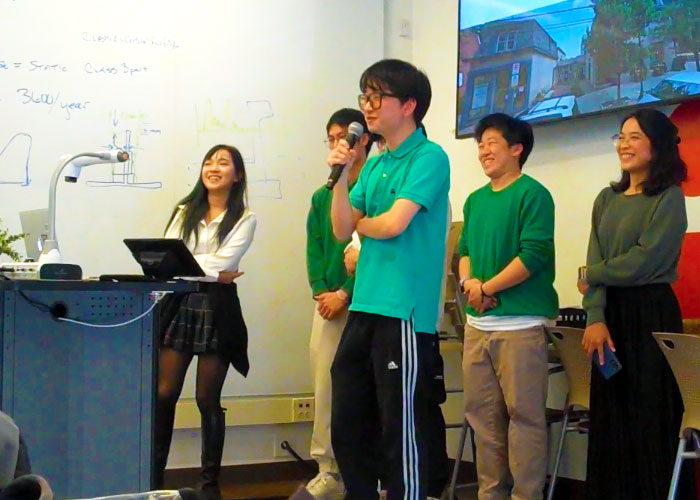
Irish Design Center "Team Celtics" Team Members:Pannida Thawornsate, Siyue (Luke) Shen, Yi (Eric) Hu, Yangjian (Steve) Wang, Keer Bai, Weijun Huang
Irish Design Center Website
Pannida, Siyue, Yi, Yangjian, Keer, and Weijun created a client pitch for the Irish Design Center focused on the cusomter experience, including redesigning the store's façade to invite customers to experience the magic of Ireland.
iii: What were the biggest challenges you faced while working on this project?
Team Celtics: Our team tried to find balance between impact and pragmatism. While completing an asset analysis and a brand audit we identified several areas of opportunity to improve upon such as: customer retention, sales, marketing, location, competitors, branding, and partnership. However, Irish Design Center faces budget constraints, so we tried to make sure that the recommendations we suggestsed would not require too much financial investment.
iii: What kind of research did you complete to make this project a more unique experience for your target audience?
Team Celtics:
Prioritization. While there were several ideas our team would have liked to explore based on the research findings, we had to select ideas that Tom and his staff would be able to implement.
iii: It was interesting to learn about the operational history of the Irish Design Center. What was the process like of determining upgrades to the shop so that customers could experience the magic of Ireland? For example, you made some recommendations to the owners of the Irish Design Center such
as: redirecting the customer flow of the store so that customer can freely navigate through the shop,
Team Celtics:
We implemented 4 steps:
- Primary Research, including direct inquiry on the current shop owner to understand key values, goals and limitations and surveys and interviews on current and potential target customers to understand their interest and opinion on the current shop.
- Secondary Research including social listening on Irish culture and products and competitive benchmarking on how similar shops succeed and expand their business
- Synthesis including persona analysis and storyboarding.
- Ideation for solutions including multiple techniques such as Crazy 8 and Concept poster.
iii: One of the owners of the Irish Design Center, Tom, seemed to be in favor of the Team Celtic recommendation to update the front window façade as well. I really liked your window treatment that featured a consistent use of colors with a solid background. Can you tell me a little bit about what went into developing some of those ideas regarding implementing a fresh look for the front window? Also can you tell me about how you recognized the area of the side brick wall as a potential place to attract customers?
Team Celtics:
Although we proposed the ideal facade to be painted in clean, solid colors and suggested inviting mural paintings for the side wall, we do understand that there may be restrictions imposed by the property owner. The gist of the proposal is to:
- Highlight and display the shop logo on the top of the street facade.
The original design, with the logo at the bottom and overlapping with other window display items, made it difficult to identify the logo. If painting is not feasible, a simple solution would be to hang the logo from the inside of the shop window, with a solid green background. - Increase visual exposure and utilize the sidewall as a medium for advertisement.
The shop possesses a neglected asset, which is the large side wall. In contrast to the front facade, which can only be seen from the front, the side wall is more eye-catching from a distance. By utilizing this space, the owner can hang posters showcasing the shop's culture, products, or promotional events to attract pedestrians' attention. - Maintain a consistent and attractive style.
It is crucial to choose a style and ensure consistency across all mediums, including the two points mentioned above and the indoor design. Using the same main colors and adhering to a consistent poster and display window style are essential in presenting the shop as a professional image and piquing people's curiosity about it.